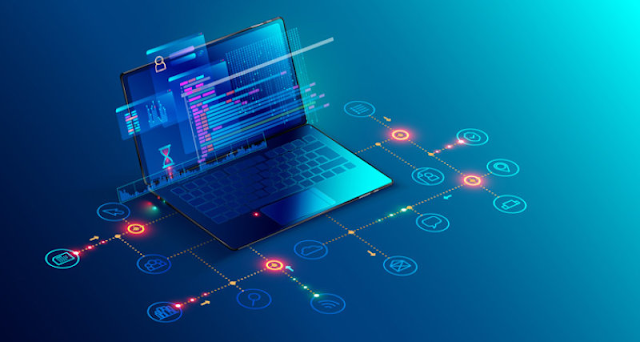Introduction
The IT environment is developing day by day. The profitability of IT companies depends on effective teamwork. Custom Software development services have to be supplied in a matter of seconds for customer recognition.
Software development lifecycle or SDLC is based on such kinds of processes: planning, designing, testing, developing, and building excellent software using cost-effective solutions. Saving time is the most important in SDLC. Creating an appropriate, effective product in a short-term period requires high expertise.
Models in software development are high-powered techniques for teams who have the purpose of quality and quick reaching of all tasks. With this in mind, leaders must choose suitable ones for their companies. In this way, team workers and IT enterprises, in general, will accelerate their productivity, and outcomes.
This article proposes you scrutinize common software development models, their descriptions, and features. All your possible questions will be disclosed.
Software development lifecycle, definition, and meaning
SDLC regards exactly IT companies that work for high-quality results, so they have to devote much time searching for a suitable model. To examine all software development processes, firstly, you should consider the SDLC definition.
The software development lifecycle is a process that creates software with high quality and the lowest cost in a short time.
To choose the software development model you should inspect all of the SDLC phases, and recognize their importance for IT enterprise.
There are 7 phases of SDLC
Planning The first step is building proper software. In this stage, developers plan their future projects, discuss all details, and create written notes and detailed moves to their goals. Also, the timeframe is included in the schedule list.
- Analysis
- Design
Before the main development phase, this step is the most important. Software models must be drawn for the overall app, then this example will be improved and brought to the parts of the programming language. A detailed plan of operation for manufacturers is created here with appropriate consistency.
Interfaces, databases, and network requirements are also built in this phae.
Development
The most important moment is when developers write code and directly build the required applications. They rely on previous documents, templates, requirements, and specifications.Testing
To launch the software, firstly, builders must test it, in order to be sure that it doesn't have bugs or hidden unsolved problems. Meeting the needs of customers is the most important thing, so testing will detect mistakes, and prevent possible failure.Launch and Integration
When problems were detected and fixed, the software design is brought together into one mechanism. The information system will be integrated into its environment and installed. After this stage application can be provided for the market.
These phases accompany any IT enterprise. It is necessary to understand models in software engineering for the quality use of these stages. Software Development Company supplies completed software created with all requirements and compliance of all stages of SDLC.
Development models, descriptions, and features
There are 3 main models
Waterfall
Iterative
Spiral
Now, let's consider software engineering models in more detail, it will help you to choose the worthy variant.
Our team has compiled a list of the most weighty features of 5 model types.
Features of Models
Let's skim through a short summary of each model.
Waterfall model
This Software model also can be called a cascade model. Its template is built as a consistency of points that must be completed step by step. Each of the development stages continues the previous one. This thread can’t be interrupted. To start a new one firstly you must do prior. It is really convenient and useful. Make sure you did the step appropriately then you will get access to the second one.
Nonetheless, the main con of its model is that mistakes are detected and fixed only during the phase. You will not fix it later if you find something inappropriate. The only option is to remake all work done. The waterfall model of software development is the most suitable and rooted version of product building.
Iterative
Development model predicts the dividing of the project cycle on consistent interactions where each of them looks like a single mini project. All SDLC are included in this mini project for creating smaller functional fragments. Decreasing risks and early detection of bugs according to model functions are strengths of this solution.
Successful realization of the project is under the control of the Iterative model.
Hovewer, not fixed budget, and terms are important disadvantages. In this model, developers have to interact with customers during each step directly. In most cases, it is not suitable for clients.
Spiral
Agile
Dev model is based on the iteration model where requirements and joining evolve through cooperation between multifunctional teams that are able to self-organization. This conception is built as prints. Its transparency provides an opportunity for clients to take part in the organization and development, detecting functions and priorities. All schedules and timeframes are included in this model. Sprints have a fixed duration thus timeframe and expenses are predicted.
Nevertheless, protection and documentation lack accented. This is the main weakness of the agile method.
DevOps
The newest methodology makes an accent on estimating the cooperation between the development and operational staff throughout the whole software development lifecycle. The main purpose of the model is to provide a single method that will meet programmers' and testers' needs. All its principles are based on elements of Agile and Lean systems. By the way, inappropriate use can lead to additional expenses. This methodology requires skills in using.
Conclusion
Software process models are diverse and include different approaches to the development of software but nonetheless, they exactly include the aforementioned stages. They also have the difference between timeframe, costs, capabilities, risks, detecting bugs, etc.
In this article, we considered the software development lifecycle, its definition, and its stages. Also, compiled a list of common software development models, their descriptions, and features.

Comments
Post a Comment